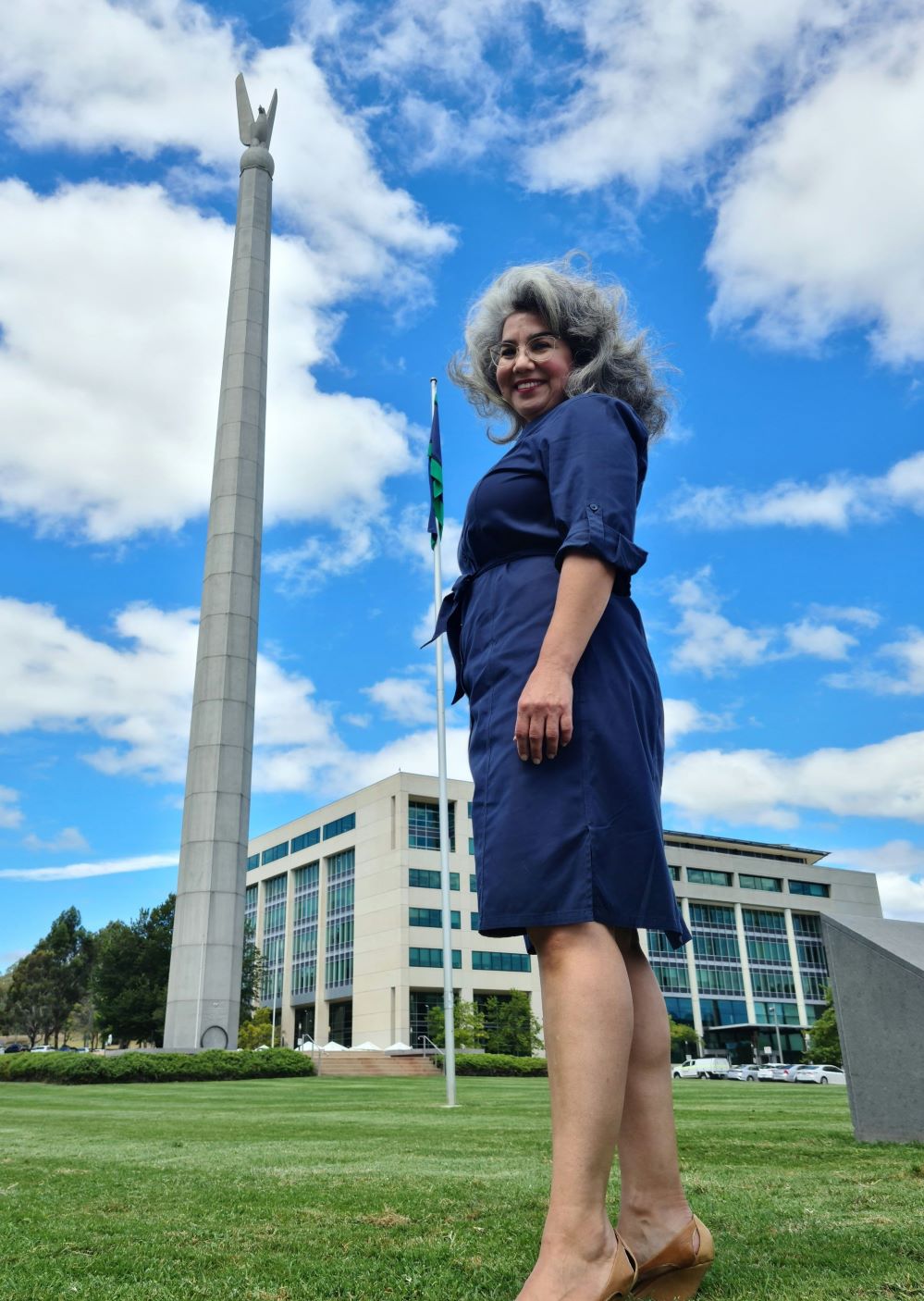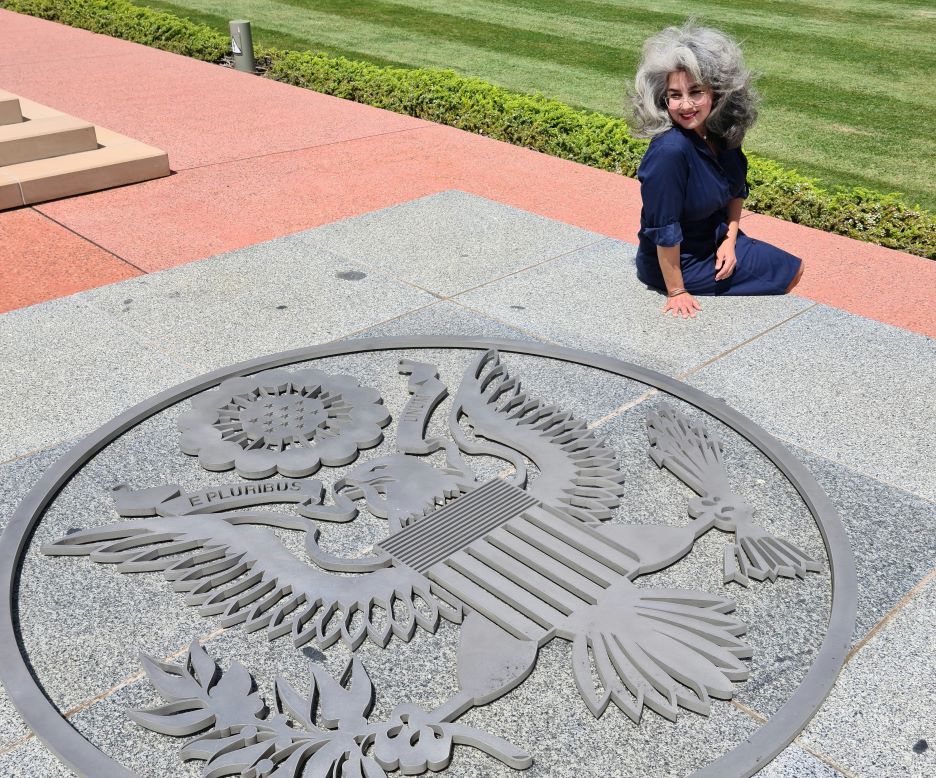The American eagle sculpture (aka Bugs Bunny / big bird/chicken on a stick / Phallus in Blunderland) that is the Australian-American Memorial, turns 70 this Friday, 16 February – and there are tales that must be told for the occasion.

Just like Canberra’s other big bird (Belconnen’s Owl), the American eagle has attracted plenty of attention over the years. The most poetic one, however, is that its stony stare locks eyes with the Australian Wedge-tailed eagle sculpture at the National Arboretum.
And indeed it does. The bronze Australian eagle sculpture (Nest III) stares to the south, while the stone-carved American eagle turns its head sharply north.
Artist Richard Moffatt, who created Nest III in 2017, says the idea is lovely but the shared gaze is unintended.
“I could make it up, I could say, ‘yes I purposely faced it towards the American eagle as an alliance with our countries and all that’, but I absolutely did not, that’s a complete coincidence,” he smiles. “I can’t back that story up, I’d like to but I am an honest person.”
Another story worth telling is that there were 31 other entries for the nationwide design competition to create the memorial. We could’ve ended up with a column that resembles the tail of an aeroplane (which came second place). Without an illustration available, it’s unclear whether it would resemble a vertically-challenged plane embedded into the ground or not. Anyway, the entry won 150 pounds.
The third-place design was of a brick column with a huge eagle at the base – a grounded eagle with antennae perhaps. This entry won 100 pounds.
The winning entry from Sydney architect Richard Ure was a last-minute entry just before the competition closed. Apparently one weekend he “got an idea for the design and drew it”.
He completed the entry in just 10 days – an octagonal column topped with an eagle with wings upswept in a victory sign – and collected 200 pounds in prize money. (Models of the original design show the eagle’s wings outstretched).
It’s worth mentioning that the Australian-American Memorial is possibly the first instance of crowdfunding in Australia. Many people assume that the memorial was a gift from America, however the Australian public raised 63,000 pounds (over $3.6 million in today’s money) in just six weeks.
Australia’s population at the time was only eight million. The actual cost of the memorial was 100,000 pounds, so the Australian Government chipped in the rest.
The idea to build the memorial and to hold a design competition in 1953 came from the Australian-American Association (AAA). Current AAA president, Alicia Doherty, is proud of the fact.
“I’ve heard local tour guides telling tourists that it was a gift from America so I’ve had to set the record straight,” Alicia says. “There’s been all sorts of urban myths surrounding it, like it being bugged or having hidden cameras so Americans can listen in.
“The reason for the memorial was to pay tribute to the sacrifices made by Australian and American service personnel in defending Australia during World War II.”
Another common misconception is that the 70-metre towering column is made of stone. It actually has a hollow octagonal column with a steel framework covered with nine tonnes of aluminium panels and sandblasted to look like stone.
Inside the column are 22 ladders that lead to the top. The column is topped with a bronze sphere and American Eagle (11 metres high). Sculptor Paul Beadle created the eagle in Sydney, which was transported to Canberra by road, then a caterpillar tractor was used to haul the eagle into position.
Understandably, calm weather conditions were needed to place the eagle on top of the column, which was done by crane at night. (The AAA initially wanted the memorial on Anzac Parade, before its present location – at the time just bushland – was found).
Seeing as we’re in the midst of US primary elections and we’ve just had the American Superbowl, it’s interesting to note that Canberra has quite a few American connections (not just the golden arches in every second suburb). Most notably, American architects Walter Burley Griffin and Marion Mahony Griffin, who won the competition to design our national capital, and American artist James Turrell, who created Skyspace installed at the National Gallery of Australia. Also, the US Embassy was the first embassy to be built in Canberra.
There’s no party with hotdogs planned for the eagle’s 70th anniversary this year (it received a $1.2 million facelift for its 60th), but there are plans by the Australian-American Association for a big 75th bash. Save the date.



